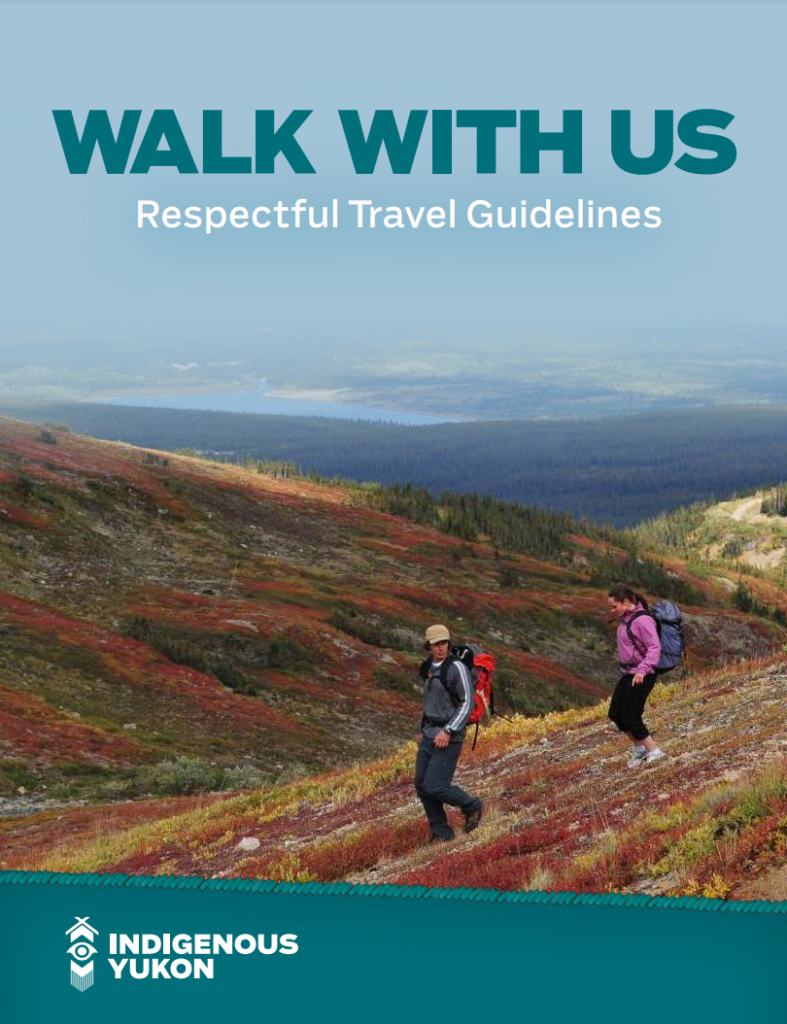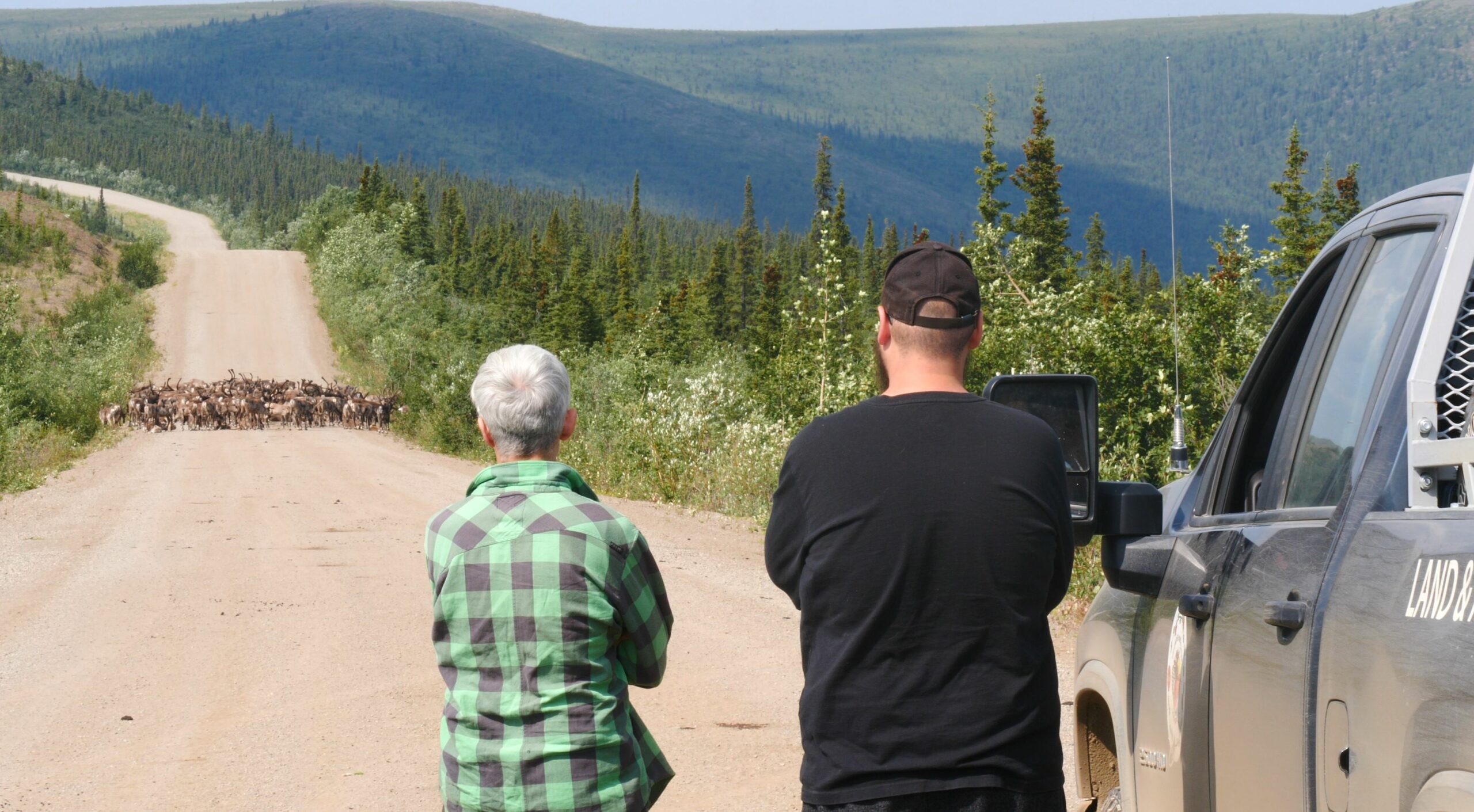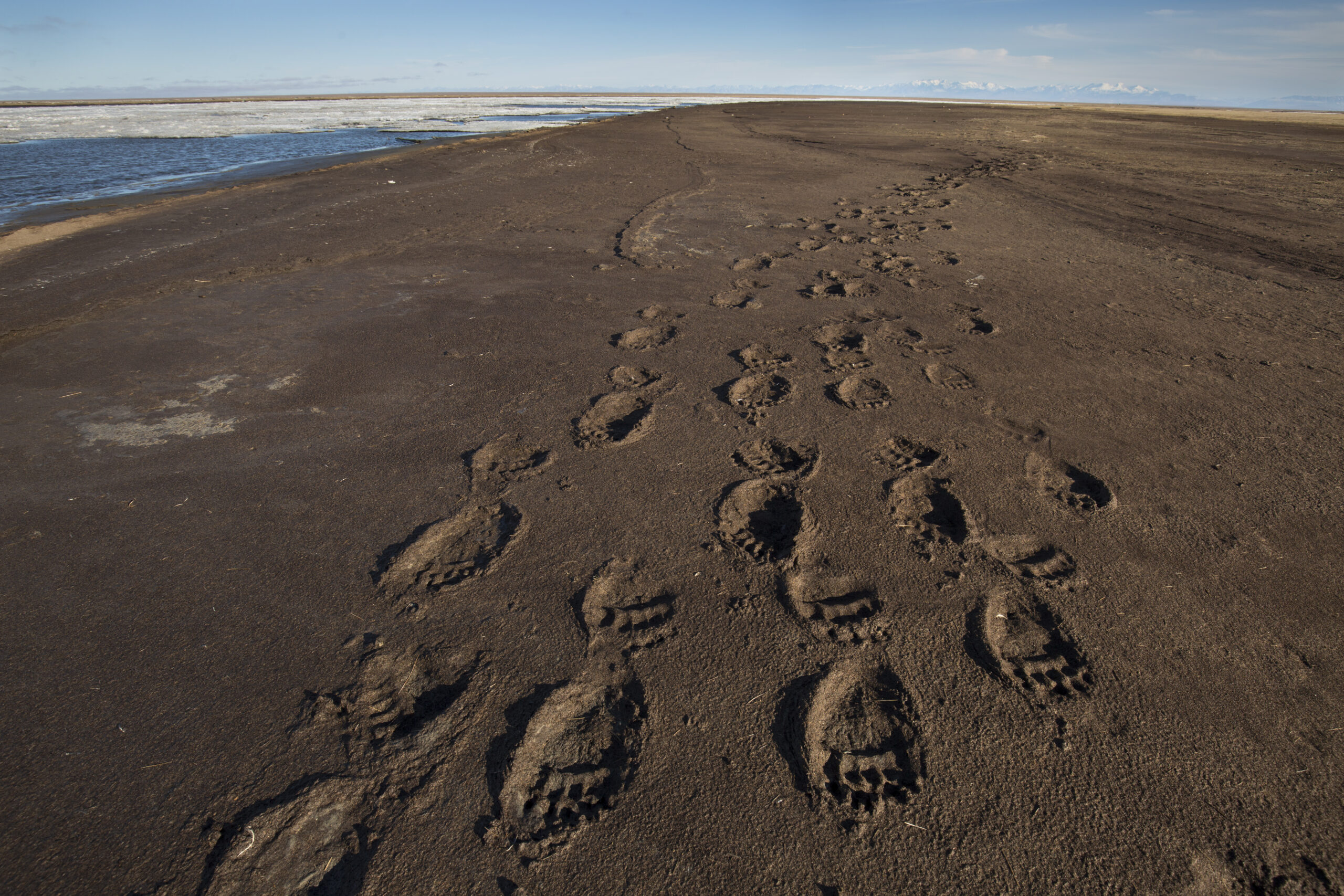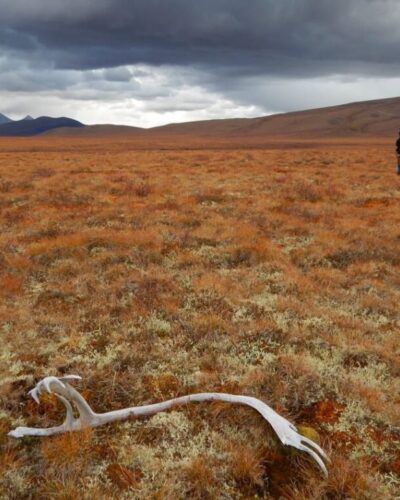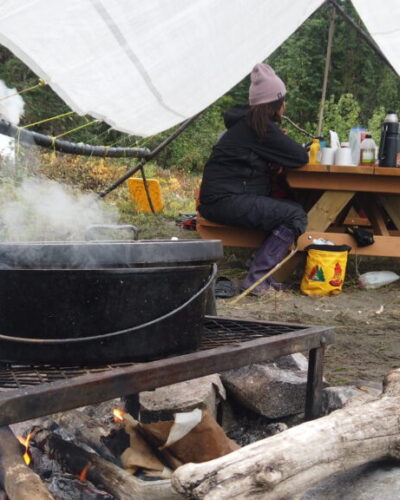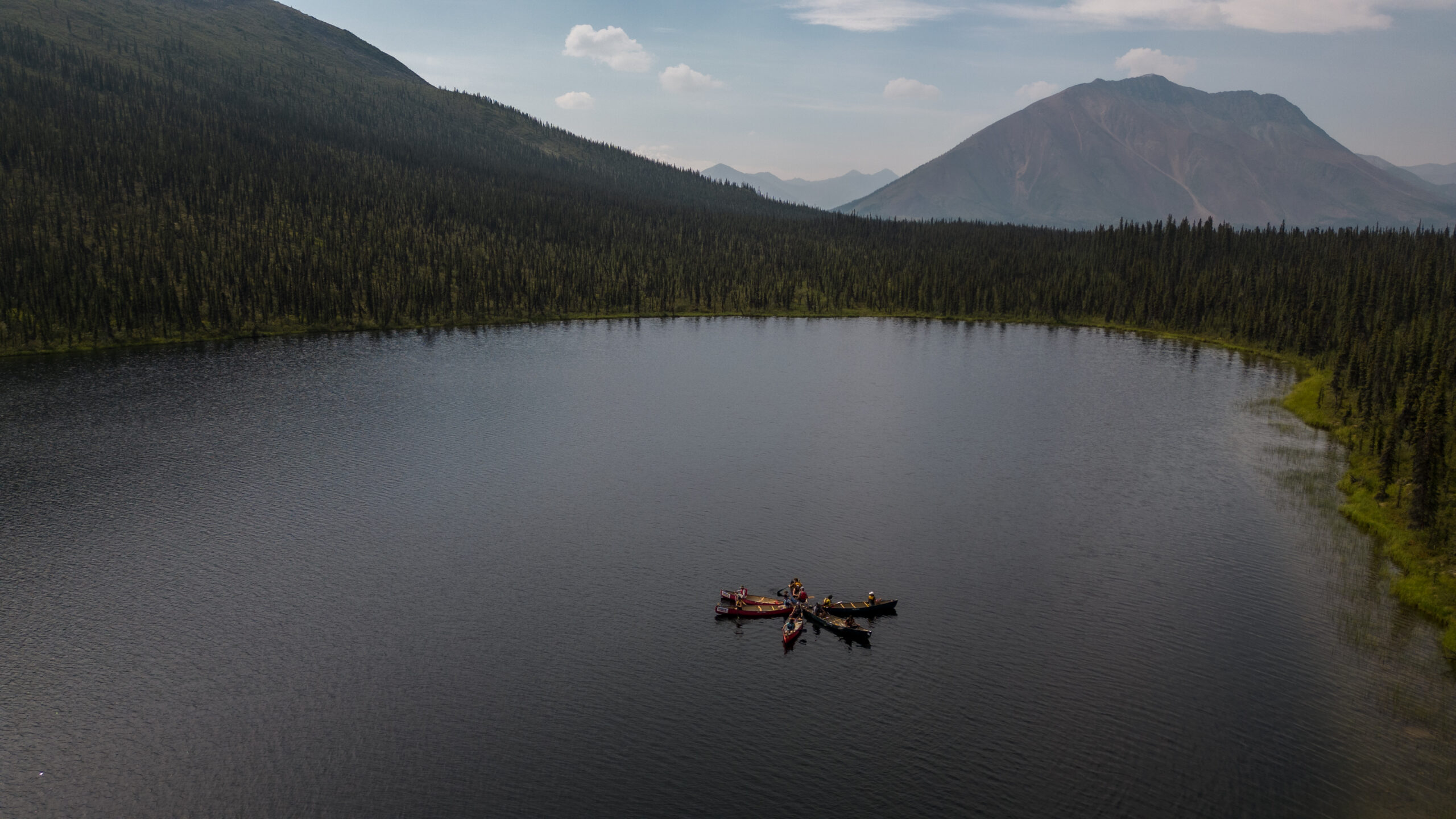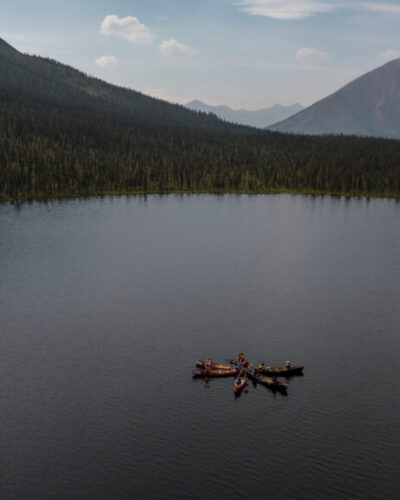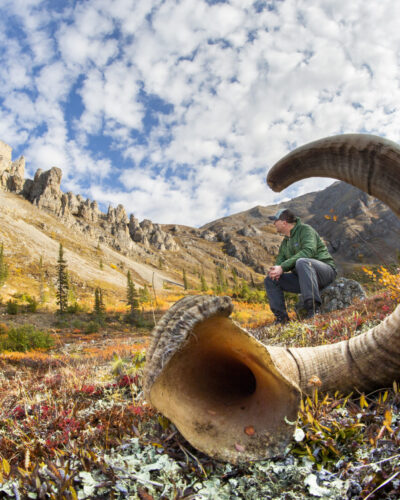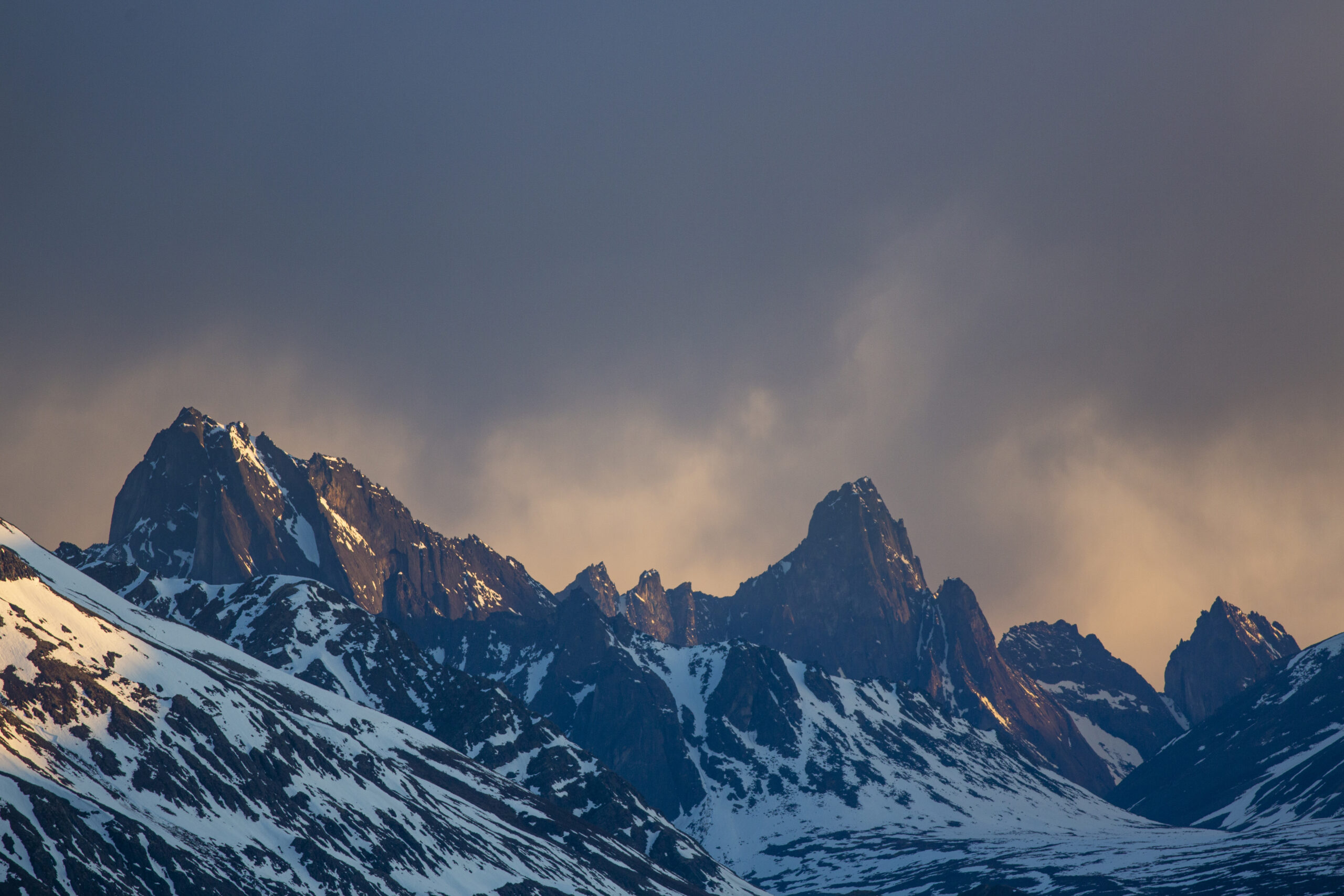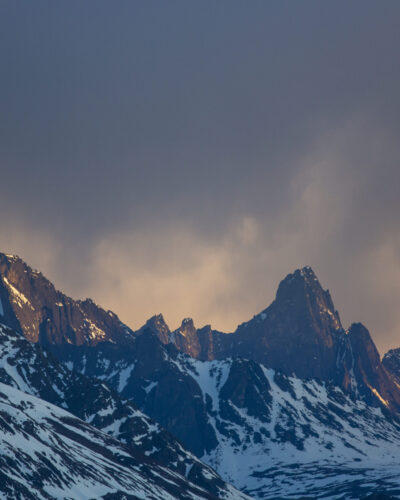Travelling in the Yukon?
LEARN HOW TO BE A RESPECTFUL GUEST
Written by Paula Gomez Villalba, Communications Coordinator | April 15, 2024
The Yukon is a tapestry of twisting rivers, towering mountains, tundra, and vast boreal forests. These lands and waters are also the traditional territories of 14 Yukon First Nations, the Inuvialuit, and transboundary First Nations in British Columbia, Northwest Territories, and Alaska.
Guests travelling anywhere in the Yukon are visiting the traditional territories of a First Nation or the Inuvialuit. In visiting these areas, you are taking on a responsibility and duty to show respect and gratitude for its stewards, as well as the land, water, and animals.
Whether hiking, paddling, berry picking, hunting, or fishing, we must learn to be respectful guests and honour the stewardship that makes exploring these wild spaces possible.
![]() Read Walk With Us – Respectful Travel Guidelines
Read Walk With Us – Respectful Travel Guidelines
![]() Know the nations on whose lands you travel on
Know the nations on whose lands you travel on
![]() Treat the land, water, and animals with care and respect
Treat the land, water, and animals with care and respect
![]()
![]()
![]()
![]() Support First Nation on the land and stewardship initiatives
Support First Nation on the land and stewardship initiatives
Read Walk With Us – Respectful Travel Guidelines
Generations of Indigenous stewardship have shaped the territory’s rich wild spaces — there are documented traces of humans in the Yukon from 24,000 years ago.¹ This stewardship is deeply rooted in traditional teachings that recognize the interconnectedness between the land, water, wildlife, and people.
Start by reading Walk With Us – Respectful Travel Guidelines created by the Yukon First Nations Culture and Tourism (YFCT) with direction from First Nations Knowledge Keepers.
“As you travel through our beautiful homelands, we invite you to Ná t’sin t’ra “hold everything up in respect” – Northern Tutchone.”
Know the nations on whose lands you travel on
When preparing to travel, learn the names and history of the Indigenous Nations’ homelands you will visit. Native-land.ca is a great resource for identifying whose traditional territories you’ll be on.
Take time to learn the teachings and stories connected with these lands. YFCT has a Welcome Guide which is a great resource. Check in and respect any rules, restrictions, or permit requirements that specific First Nations may have in effect.
Yukon First Nations:
- Carcross/Tagish First Nation
- Champagne and Aishihik First Nations
- First Nation of Na-Cho Nyäk Dun
- Kluane First Nation
- Kwanlin Dün First Nation
- Liard First Nation
- Little Salmon/Carmacks First Nation
- Ross River Dena Council
- Selkirk First Nation
- Ta’an Kwäch’än Council
- Teslin Tlingit Council
- Tr’ondëk Hwëch’in
- Vuntut Gwitchin First Nation
- White River First Nation
Treat the land, water, and animals with care and respect
Respect the natural behaviours of wildlife who rely on the land for food, safety, and to care for their young. Keep a safe distance and move away if you notice that they are reacting to your presence. Don’t feed wildlife, and especially avoid disturbing animals during the harsh winters or sensitive breeding periods when they need their energy.
Existing roads and highways connect us to different wild spaces, but they traverse through wildlife habitats, potentially exposing animals who need to access other areas. Stay alert, slow down, and watch for wildlife ahead while driving. The Yukon Conservation Officer Services has shared that high collision areas include the Southern Lakes region (including the Alaska Highway, South Klondike Highway, Carcross, Tagish and Atlin Roads), Kluane country near the base of Thechàl Dhâl (Sheep Mountain), and Watson Lake area from Lucky Lake to Big Creek (between kilometre 1021 and 1048).
Stick to designated trails and campsites if possible. Concentrate your activities on areas with durable surfaces like rock, sand, or deep snow. In remote areas, disperse your impact to avoid creating new trails or campsites.
Drones can negatively impact wildlife, Indigenous subsistence activities, and the overall experience of being out on the land. In some areas like national parks, the use of drones is prohibited, so be sure to do your research first. Show respect for others by avoiding flying over campsites and people. Follow these guidelines by Parks Canada to respect wildlife:
- If an aircraft causes an animal to move, flee, or change their behaviour, then it is too close
- Never circle, chase, hover over, dive towards, or pursue wildlife
- Whenever possible, minimize the amount of time circling before landing
- Avoid flying directly over or towards animals
- Caribou calving grounds should be avoided whenever possible
- Where practicable, pilots should maintain a minimum 1.1 nmi (2 km) horizontal distance from all wild sheep, mountain goats, and caribou
- Maintain an altitude of 3500 ft (1067 m) AGL above areas with bird concentrations (colonies or moulting areas)
- Plan routes that minimize flights over habitats likely to have birds and avoid sensitive areas such as moulting areas and raptor nesting sites
✓ Give wildlife space
✓ Minimize your impact
✓ Reduce speed when using motorized vehicles
✓ Keep wildlife attractants contained
✓ Limit drone use
Leave no trace
Take with you what you bring, and leave the rest as you find it. Before moving on to a new area, inspect where you were for trash or food scraps, making sure to securely pack everything out. Human trash pollutes sensitive landscapes and puts wildlife at risk, altering their behaviour and threatening their health. If you see trash, pick it up and dispose of it properly.
Leave stones, natural structures, or other materials where you find them. Some may hold cultural significance and others might be an animal’s food or home. Landscapes in the Yukon are sensitive and slow-growing, everything has its role.
If you need to build a campfire, be safe and opt for a portable stove or use a fire pan to reduce your impact. Keep campfires small, far from vegetation (at least 3 metres), and never leave them unattended. In an average year, nearly one-third of fires in the Yukon are caused by human activity.² It’s very important to let the wood and embers burn down to ash, soaking the campfire with buckets of water or burying it with sandy soil until the ashes are cool to the touch. The Yukon government has a Wildfire Hub with information on current fires, bans, and potential resulting travel restrictions.
As more people explore the Yukon and climate change progresses, many invasive species are settling in the territory and pushing out native ones. Minimize their spread by brushing off all dirt and plant debris from your gear before going to a new area. If travelling by water, clean, drain, and dry all parts of your watercraft.
✓ Pack it in, pack it out
✓ Leave everything as you find it
✓ Prevent wildfire
✓ Minimize the spread of invasive species
Give thanks to the land in your way
As you travel in the Yukon, take moments to pause and express gratitude for the privilege of experiencing their beauty. Reflect on what you learned about the specific First Nation’s history on these lands, and how their stewardship shaped your experience. Whether it’s a quiet moment by a rushing river or a peaceful pause atop a mountain peak, acknowledge the land’s generosity and resilience in allowing you to tread upon it.
✓ Express gratitude
Share your journey and gratitude
Extend your appreciation to the Indigenous Nations whose ancestral lands you visited. Engage respectfully with community members about what you experienced, learned, and felt. When you share stories or photos with friends or family, always name the nations of whose lands you travelled on and use their traditional place names if possible.
✓ Engage with the community
✓ Name the nations
✓ Use traditional place names
Support First Nation on the land and stewardship initiatives
Show your support for Indigenous initiatives by contributing to First Nations stewardship funds. These funds play a crucial role in supporting communities’ agency and efforts to conserve their traditional land for future generations. Opt for Indigenous-owned or operated tourism companies to directly support Indigenous communities and engage in authentic cultural experiences. Advocate for the recognition and support of Indigenous Protected and Conserved Areas (IPCAs) and Land Guardian programs which are vital for preserving biodiversity, cultural heritage, and traditional knowledge.
✓ Support First Nation initiatives
By embracing these principles of respect, gratitude, and community, travel in the Yukon can honour the generations of stewardship, intricate relationships within ecosystems, and the rights of Indigenous people to ensure that the territory’s wild spaces will thrive for years to come.
This webpage is a living resource that we’ll continue to update as we engage with local First Nations and develop additional resources to help you travel respectfully. If you have suggestions or feedback, feel free to reach out at info@cpawsyukon.org.

